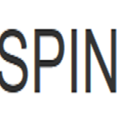We propose a practical hybrid decoding scheme for the parity-encoding architecture. This architecture was first introduced by N. Sourlas as a computational technique for tackling hard optimization problems, especially those modeled by spin systems such as the Ising model and spin glasses, and reinvented by W. Lechner, P. Hauke, and P. Zoller to develop quantum annealing devices. We study the specific model, called the SLHZ model, aiming to achieve a near-term quantum annealing device implemented solely through geometrically local spin interactions. Taking account of the close connection between the SLHZ model and a classical low-density-parity-check code, two approaches can be chosen for the decoding: (1) finding the ground state of a spin Hamiltonian derived from the SLHZ model, which can be achieved via stochastic decoders such as quantum annealing or classical Monte Carlo samplers; (2) using deterministic decoding techniques for the classical LDPC code, such as belief propagation and bit-flip decoder. The proposed hybrid approach combines the two approaches by applying bit-flip decoding to the readout of the stochastic decoder based on the SLHZ model. We present simulations demonstrating that this approach can reveal the latent potential of the SLHZ model, realizing soft-annealing concept proposed by Sourlas.
翻译:暂无翻译





